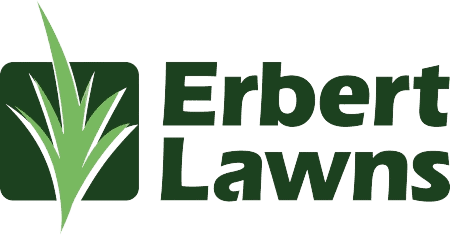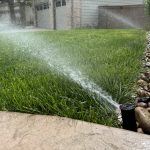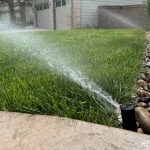Managing Weeds in Large Areas
- Key Takeaways:
- Effective Strategies for Large-Scale Weed Control
- Understanding Weed Types and Their Growth Cycles
- Implementing Integrated Pest Management (IPM)
- The Role of Soil Health in Weed Management
- Chemical Control: When and How to Use Herbicides Safely
- Innovations in Weed Management Technology
- Conclusion
- FAQs:

At Erbert Lawns, we understand that managing weeds in large areas presents unique challenges. Whether it’s a sprawling backyard, a golf course, or any other expansive landscape, effective weed management ensures both aesthetic appeal and plant health. This guide offers comprehensive insights into strategies for controlling weeds over large tracts of land.
Key Takeaways:
- Preventative Measures: Start with soil health and proper landscaping techniques to discourage weed growth.
- Appropriate Tools: Use the right tools and techniques for large-scale weed management.
- Regular Maintenance: Keep up with regular care to prevent weeds from taking over.
- Professional Help: Consider professional services for effective, long-term solutions.
- Safety Practices: Always prioritize safety when using chemical treatments.
Weeds are more than just an eyesore; they compete with your desired flora for nutrients, water, and sunlight, potentially leading to poor plant health. At Erbert Lawns, we emphasize a proactive approach to weed control that combines cultural practices, the right tools, and, when necessary, chemical interventions to maintain your landscape’s beauty and vitality.
Effective Strategies for Large-Scale Weed Control
- Preventative Landscaping
Start by enhancing the soil quality with compost and other organic materials to give your plants a competitive edge over weeds. Choose ground covers and other plants that naturally suppress weeds by shading the soil.
- Mechanical Tools
For large areas, mechanical tools like rotary hoes, tillers, and specialized mowers can efficiently manage weed growth. Consider investing in a high-quality landscape fabric to minimize weed emergence in vulnerable areas like flower beds and vegetable gardens.
- Herbicides
When selecting herbicides, it’s crucial to choose products that target specific weeds without harming your plants. Integrated Pest Management (IPM) techniques can guide you in choosing the least toxic options.
- Regular Maintenance
Regular mowing, watering, and fertilizing in accordance with the needs of your landscape will keep your plants healthy and more resistant to weeds. Establish a routine that includes monitoring and prompt removal of new weed growth.
- Professional Consultation
Sometimes, the scale or complexity of weed issues may require the insights of a professional. At Erbert Lawns, our expertise ensures that large-scale weed management is both effective and sustainable.
For further reading and to understand more about how Erbert Lawns can assist you, please visit our About Us page.
Understanding Weed Types and Their Growth Cycles
To manage weeds effectively across large areas, it’s crucial to understand the types of weeds you’re dealing with and their growth cycles. Weeds can be broadly categorized into two types: annuals and perennials. Annual weeds, such as crabgrass and chickweed, complete their lifecycle in one season and rely heavily on seeds to propagate. Perennial weeds, like dandelions and thistles, can live for multiple years and often spread through underground roots as well as seeds.
Identifying the specific types of weeds on your property allows you to tailor your approach to their specific growth habits and vulnerabilities. For example, pre-emergent herbicides are effective against annual weeds by targeting their seeds before they germinate. In contrast, post-emergent herbicides are better suited for tackling established perennial weeds.
Implementing Integrated Pest Management (IPM)
Integrated Pest Management (IPM) is a sustainable approach that combines biological, cultural, mechanical, and chemical methods to minimize weed growth. This strategy focuses on long-term prevention of weeds through ecosystem management that can include:
- Biological Controls: Introducing natural weed predators or competitors can help reduce the weed population. For example, certain types of beetles are known to feed on specific weed species.
- Cultural Practices: Adjusting mowing height and irrigation practices to favor the growth of lawn grasses or other desired plants helps suppress weeds by outcompeting them.
- Mechanical Controls: Regularly removing weeds with tools like hoes, trowels, or weed whackers before they set seed can greatly reduce future populations.
By using an IPM approach, you not only manage weed problems more effectively but also reduce the reliance on chemical herbicides, promoting a healthier environment.
The Role of Soil Health in Weed Management
Healthy soil is the foundation of a robust lawn and garden that can resist weed invasion. Weeds often thrive in compacted, nutrient-poor, or disturbed soils where desired plants struggle. Enhancing soil health can significantly reduce weed problems by promoting stronger growth of desired plants. The following tips can help to improve soil health:
- Regular Soil Testing: This helps you understand the nutrient and pH levels of your soil, allowing you to adjust them optimally for your plants and less ideally for weeds.
- Adding Organic Matter: Incorporating compost or mulching with soil organic matter can improve soil structure, fertility, and water retention, discouraging weed growth.
- Proper Aeration: Aerating your lawn or garden helps alleviate soil compaction, allowing roots to grow more deeply and outcompete weeds.
Chemical Control: When and How to Use Herbicides Safely
While cultural and mechanical methods are preferred for sustainable weed management, sometimes the application of chemical herbicides is necessary, especially in large areas where other methods may be impractical. When choosing and applying herbicides, consider the following:
- Selectivity: Choose selective herbicides that target specific weeds without harming other plants. For example, broadleaf weed killers that spare grasses.
- Timing: Apply herbicides at a time when they will be most effective against the weed you are targeting and when environmental conditions minimize risks of drift or runoff.
- Safety: Follow all label instructions closely, wear appropriate protective gear, and consider the environmental impact of the herbicides you use.
Innovations in Weed Management Technology
Advancements in technology are making large-scale weed management more efficient and less labor-intensive. Drones, for example, can be used to survey land and apply precise treatments to affected areas, reducing the amount of chemicals needed and minimizing human exposure. Robotic weeders and GPS-guided tractors are also emerging as tools that can help manage weeds more effectively over large plots of land.
These innovations not only reduce the cost and labor associated with traditional weed management practices but also increase precision in targeting specific areas, thus preserving the surrounding environment and reducing the overall ecological footprint.
By combining a deep understanding of weed types and their lifecycles, implementing integrated pest management practices, focusing on soil health, using chemical controls wisely, and embracing technological innovations, managing weeds in large areas can be done effectively and sustainably. Erbert Lawns is committed to leveraging these strategies to help you maintain a healthy and visually pleasing landscape. Read more about our weed control and fertilization service here.
Conclusion
Managing weeds in large areas requires diligence, the right tools, and sometimes a bit of professional help. At Erbert Lawns, we’re dedicated to providing you with effective solutions tailored to your specific needs. Don’t let weeds overtake your beautiful landscape. Contact us today for expert assistance and reclaim the beauty of your outdoor spaces.
FAQs:
What is the best way to prevent weeds in large lawns?
Maintain a healthy lawn with regular mowing, proper watering, and appropriate fertilization to naturally suppress weeds.
Are natural weed killers effective for large areas?
Natural weed killers can be effective but may require more frequent application than chemical alternatives. They are best used in conjunction with other preventative measures.
How often should I inspect my property for weeds?
Inspect your property at least once a month to manage weeds before they become a larger issue.
Can mulching help control weeds?
Yes, mulching effectively suppresses weeds by blocking sunlight from reaching the seeds and adding a physical barrier.
What safety precautions should I take when using chemical herbicides?
Follow the manufacturer’s instructions, wear protective clothing, and avoid spraying on windy days to prevent drift.

Adrian is a former marine navigation officer turned writer with more than 3 years of experience in the field. He loves writing about anything and everything but specializes in covering smart technology and gardening. When he’s not writing, Adrian enjoys spending time with his family and friends or hiking in the great outdoors.








